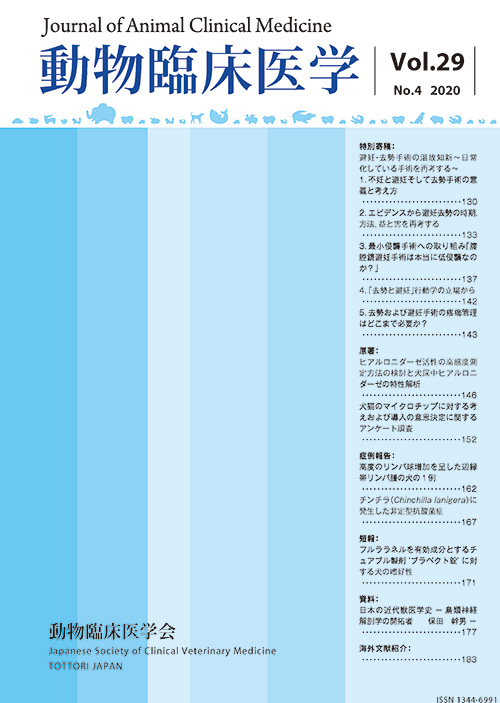Volume 29, Issue 4
Displaying 1-11 of 11 articles from this issue
- |<
- <
- 1
- >
- >|
Special Contribution
-
2020 Volume 29 Issue 4 Pages 130-132
Published: December 25, 2020
Released on J-STAGE: December 25, 2021
Download PDF (711K) -
2020 Volume 29 Issue 4 Pages 133-136
Published: December 25, 2020
Released on J-STAGE: December 25, 2021
Download PDF (797K) -
2020 Volume 29 Issue 4 Pages 137-141
Published: December 25, 2020
Released on J-STAGE: December 25, 2021
Download PDF (1956K) -
2020 Volume 29 Issue 4 Pages 142
Published: December 25, 2020
Released on J-STAGE: December 25, 2021
Download PDF (553K) -
2020 Volume 29 Issue 4 Pages 143-145
Published: December 25, 2020
Released on J-STAGE: December 25, 2021
Download PDF (825K)
Original Article
-
2020 Volume 29 Issue 4 Pages 146-151
Published: December 25, 2020
Released on J-STAGE: December 25, 2021
Download PDF (1438K) -
2020 Volume 29 Issue 4 Pages 152-161
Published: December 25, 2020
Released on J-STAGE: December 25, 2021
Download PDF (2149K)
Case Report
-
2020 Volume 29 Issue 4 Pages 162-166
Published: December 25, 2020
Released on J-STAGE: December 25, 2021
Download PDF (9177K) -
2020 Volume 29 Issue 4 Pages 167-170
Published: December 25, 2020
Released on J-STAGE: December 25, 2021
Download PDF (1409K)
Short Report
-
2020 Volume 29 Issue 4 Pages 171-176
Published: December 25, 2020
Released on J-STAGE: December 25, 2021
Download PDF (762K)
Material
-
2020 Volume 29 Issue 4 Pages 177-182
Published: December 25, 2020
Released on J-STAGE: December 25, 2021
Download PDF (1901K)
- |<
- <
- 1
- >
- >|
